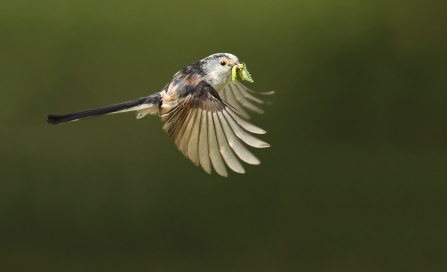Great Spotted Woodpecker
Spring must be on the way because the woodpeckers of Belfairs are very noisy at the moment, drumming to establish territories and attract a mate. Both males and females drum; up to 600 times a day when trying to attract a mate. It is suggested that the duration and intensity of calls is a reliable indication of fitness, with stronger, healthier individuals able to drum faster, louder and for longer- it is therefore possible that individuals can identify one another from drumming patterns.
Flocks of tits
“Birds of a feather flock together”. This saying has a grounding in truth; at this time of year you might come across flocks of a mix of tit species at Belfairs. The tits in these flocks are largely insectivorous, making foraging quite an involved process, especially in the winter when prey is scarcer. However, these birds are small and liable to predation themselves, so must remain vigilant for predators as well as prey. When in a flock, an individual can spend more time foraging as it can rely on the vigilance of others to detect predators. Foraging in a group is also thought to increase foraging efficiency in winter as one individual might flush out a prey item that another individual might catch.
If you are interested in learning more about how different animals cope with winter conditions, there is still space on our Winter Wildlife Walk on the 17th of February. Call Belfairs Woodland Centre or check our website or Facebook for more details.


